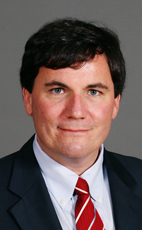- Reaction score
- 36
- Points
- 560
So how low can the Liberals go?
http://stevejanke.com/archives/321872.php
http://stevejanke.com/archives/321872.php
The flip side of the Orange Crush
Monday, September 26, 2011 at 06:29 PM
Comments: 2
During the election, I described the Orange Crush as an example of a positive feedback loop. Essentially, an increase in support for the NDP was picked up by the pollsters, then reported in the media, which then led to an increase in support, and so on, until the level of NDP support locked at whatever maximum it could reach (the party picked up all the support it would ever get).
Now I wonder if we are seeing the flip side. A positive feedback loop that is driving down Liberal support:
The Conservatives remain the most popular party for both genders (Men 43%, Women 36%). Respondents aged 18-to-34 pick the NDP first (38%), while those aged 35-to-54 and those over the age of 55 prefer the Tories (42% and 48% respectively).
Three parties-the Conservatives, the NDP and the Greens-are holding on to at least four-in-five voters who supported them in the May 2011 election. The retention rate is lower for the Bloc (75%) and the Liberals (70%).
That last tidbit of information is most intriguing for me. A 70% retention rate? Why? The election is over. There is no choice in front of the voters. Frankly, there is little reason for people to be thinking of who to support, leading potentially to the changing of minds, since the question won't matter for another four years. And yet, the Liberals are haemorrhaging support.
In other words, people voted for the Liberals, perhaps strategically, and realized that their vote was for naught. The disastrous performance of the Liberals and the constant noise in the media about mergers with the NDP are causing these voters to belatedly switch their support to the NDP or to the Conservatives. Remember that the Liberals earned only 18% of the popular vote. Now they wish they had that much support.
But what about The Latest Liberal Tour to Listen to Canadians? It won't make a difference. People aren't listening to Bob Rae or Ralph Goodale or Justin Trudeau. They just hear bad news followed by more bad news, and they are reacting accordingly, which generates even more bad news. And so on and so on.
I have to wonder, therefore, if there is no cure for the Liberal Party. The same dynamic that pushed the NDP up and up is driving the Liberals down and down. Each report of Liberal troubles just reinforces the downward pressure, feeding into the next report, which increases the pressure further. All that blather about Liberal values and such? It doesn't matter. Nothing matters. Nothing can stop the downward trajectory until the Liberals hit whatever floor of support exists for them.
What happens then? The downward pressure could dissipate, especially if fading Liberal relevance gives the party a respite from negative reports in the media. But then the Liberals will have to have the banked resources to sustain themselves and then hope to drive upward.
I doubt that will be the case. Hand-in-hand with the lowered support will be donation levels dropping quarter after quarter, and of course, the public subsidy shrinking year after year. In other words, as the support drives down and down, so does the money. Without money, the Liberal Party might very well shrivel up and die once it drops below some critical mass.
All we can do is hope.







